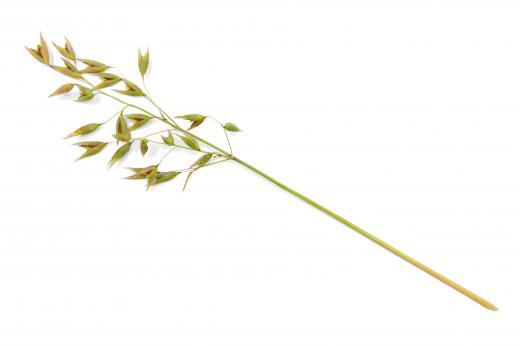There are numerous different factors to look at before you select a new air seeder, and choosing the best unit for your purposes can depend largely on the crops you need to sow, how much land you have to cover, and the kind of soil you are working with. Air seeders are typically less accurate when they are operated with any of the secondary headers blocked, so you may want to look for a unit with the number of headers you actually need. The size of the air seeder is also important, since choosing one that is too large for your workload can end up being a waste of money. Different seeders have varying levels of accuracy in seed and fertilizer metering as well, so you may want to take that into account when making your choice.
Air seeders are farm implements that are capable of automatically sowing many seeds in quick succession. These devices are typically also capable of laying down fertilizer at the same time, and can often be used to fertilize fields after they have been planted as well. Air seeders are a common alternative to drills for planting seeds quickly, and they are often used to sow oats, wheat, and other cereal grains. Since air seeders have so many different options, it is necessary to consider your unique situation in order to select the best unit.

Accuracy is one of the factors you may want to look at when selecting an air seeder. These machines are sometimes less accurate than drills, though they will typically place seeds in a fairly uniform manner if all of the secondary headers are used. Blocking secondary headers typically results in seeds that are planted at uneven depths or in rows that are not sufficiently uniform. That makes it important to select an air seeder that is properly sized for your application, so that you will be able to operate it with all of the headers in use.

It can also be important to pay attention to the accuracy of both fertilizer and seed meters. Seed metering is important, since that is what determines the rate at which the seeds are planted. If you are not careful to look for an air seeder with accurate seed metering, you may find that your seed placement is too spaced out, or bunched up, which can adversely affect the growth of the plants. Fertilizer meters are typically not as accurate as seed meters, but that is usually acceptable. Some fertilizer meters are especially inaccurate on slopes though, so you will want to keep that in mind if your land is especially hilly.
You may also want to pay attention to features such as the size of the tank and the type of blower. Tank size can dictate how many seeds you will be able to plant without refilling, and blowers are often operated by hydraulic power or a dedicated diesel engine. The type of seed boots an air seeder uses can also be important, since some are designed for many types of grains, and others are geared more towards one particular kind.
